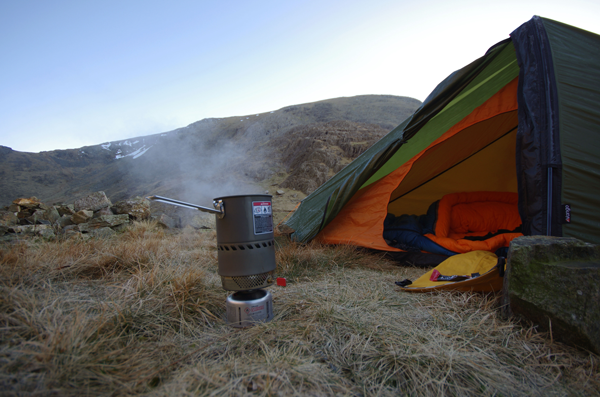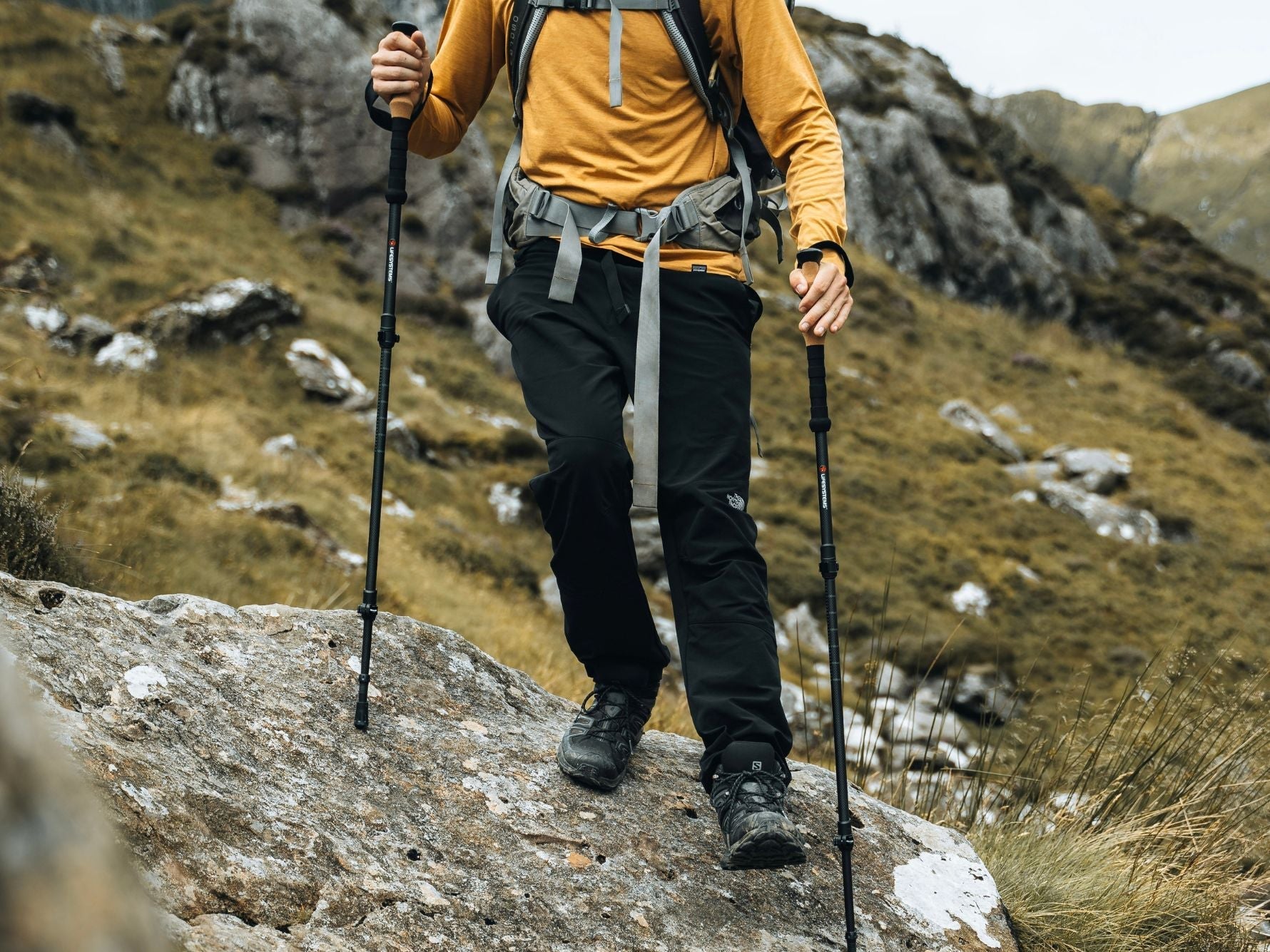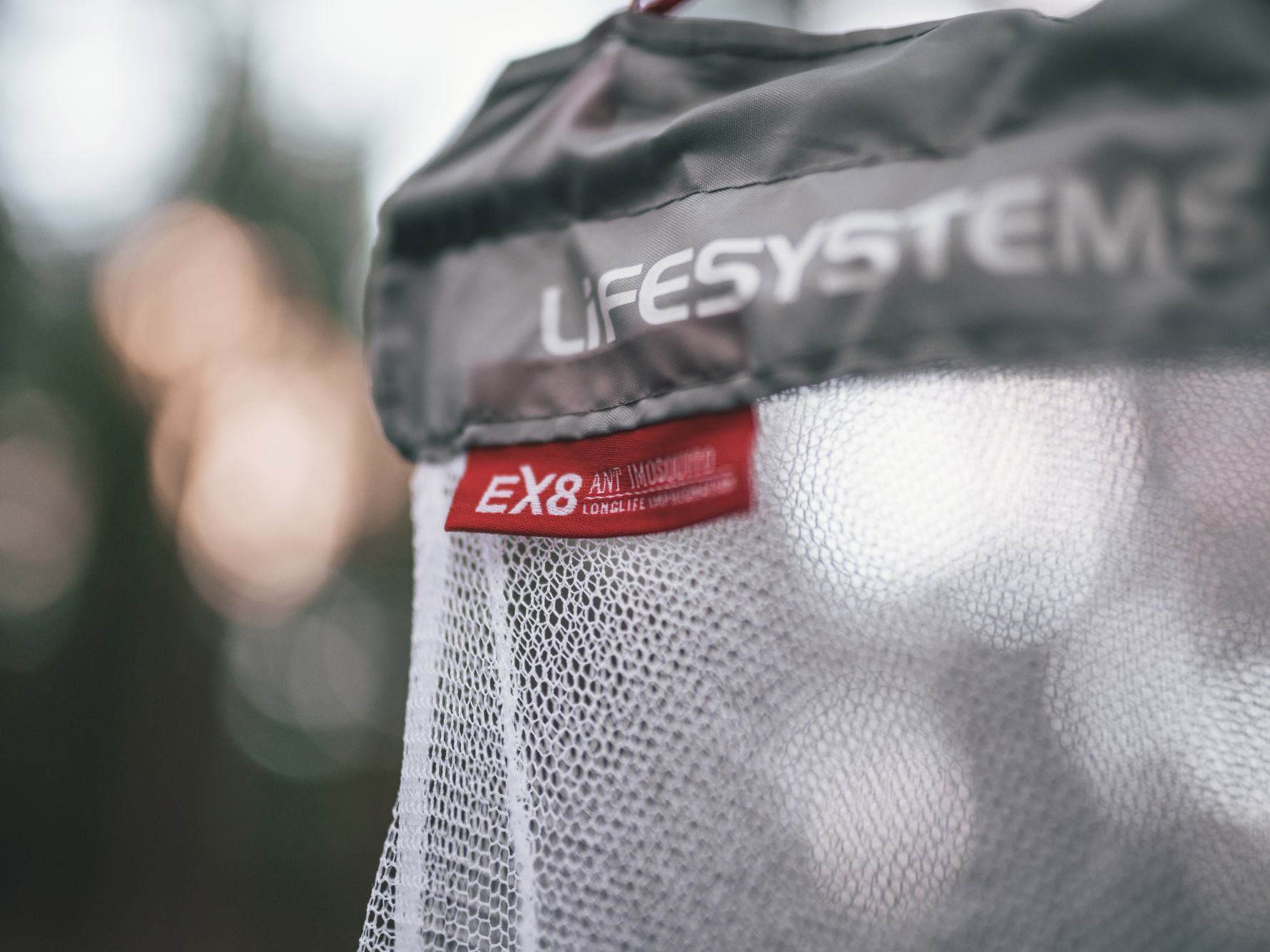Food for the wild by Dan Aspel
- Adventurers
- Blog

If you’ve spent a day, or days, exploring the British hills then you’ll know just how hungry it makes you. Ravenous would be the right word. Hungry enough to gnaw your own arm off might also be accurate. But let’s at least agree: seriously, maybe even angrily, in need of food.
Hot food on a cold wild camp - not just a joy, but more or less a necessity when out in the winter months.
Boiling wild water also purifies it, making it safe to drink.
That’s because pushing your body up and down rough terrain is one of the most exhausting things you can do. It’s a very imprecise science, and heavily dependent upon your own metabolism, but best estimates claim that you burn somewhere between 400-600+ calories per hour that you’re out “hiking” . Take a standard 8hr day summiting Scafell Pike or wandering elsewhere in the Lakes and you can see why sausage and mash, two pints of ale and an apple crumble might only just begin to “touch the void” when you’re back in the warm. It takes some serious input to counter that output.
Expedition-grade grub. It might not look pretty, but this game’s all about calories.
But before I continue: a warning. There are hundreds, if not thousands, of online articles about nutrition out there. This isn’t one of them. Nor is it a guide to foraging for the kind of wild foods - such as mushrooms, garlic, nettles and berries - that you can eat straight out of the soil in the UK (although I’ll include some helpful links on this topic at the bottom). This is one outdoor person’s guide to the kind of portable, high-density foods that a lot of hillwalking, mountaineering and wild camping has taught me work. The foods that keep me going longer than the alternatives, are typically the cheapest options available (journalism and outdoor leadership aren’t rich man’s games) and may just have the added benefit of not tasting entirely horrible. It may get ugly.
These recommendations are entirely personal, and I’d welcome any equally personal suggestions in response - so please do get in touch. I have no commercial interest (other than their continued survival) in each of the products you’ll find mentioned below.
Let’s begin…
Primula and oatcakes are probably the most consistently impressive food combination I’ve ever eaten in the mountains. On a practical level, a tube of cheesy goo is never going to get damaged by abuse, rain or being sat on. The oatcakes (you can buy branded, but every supermarket does their own value range) come in plastic-wrapped packets of 6-8. Combine a single tube with two packets of oatcakes and you’ve got two lunches. And this is the kind of lunch that will keep hunger from your mind until about seven in the evening, no matter what activity you’re doing. I’ve tried eating Primula back in the warm comfort of my flat, and it was - to be frank - revolting. But for some reason this industrial combination of generic cheese, milk, emulsifying salts, butter and chives really makes blocks of flavourless oats palatable. It digests quickly, won’t repeat on you and - as mentioned - is cheap and portable.
Anything this stylishly packaged has got to taste good, surely?
Yes, it really does look this delicious in reality.
Which Muppet does this look like? I’m saying Kermit.
Jelly Babies don’t have to be the ones made by Bassett’s, as there are plenty of cheaper imitations out there, but whichever way you look at them they’re a pretty effective way of getting sugar into yourself. Their main ingredient is sugar. Then you add some glucose syrup, beef gelatine (apologies to any vegetarians or vegans reading), some concentrated fruit juice, flavourings, colourings, acid… essentially this is in no way whatsoever a health product… and you're done. They’re pretty to look at, impossible to damage and actually taste pretty great when you’re in need of some emergency energy. I wouldn’t eat them regularly, but they certainly have their place. However, even Jelly Babies pale in comparison to what we’re going to look at next.
Jelly Babies. They’re charming little guys, but there’s a reason they’re seldom recommended as part of a balanced diet.
Kendal Mint Cake is absolutely insane. Like an adrenaline injection straight to the heart (which would actually be preferable as it’d do less damage to your teeth if delivered intravenously). The weirdest part is that it’s actually a Victorian product. The oldest surviving manufacturer has been churning the stuff out since the 1880s, and even then it was based on an “old recipe”. Stores of it were taken on the first successful Everest summit expedition in 1953. To make it you take bags and bags and bags of sugar, add some glucose syrup and some water and some peppermint flavouring… and that’s it (seriously, I’ve been to the Romney’s factory in Kendal and seen them do it). Then you cook it and cool it down into bars. Then you sell it. It’s kind of like the German beer purity law being applied to confectionary. What you get is just a crazily dense pick-me-up for when you truly have run flat of energy. A bar of the stuff only contains marginally less calories than the same weight of sugar. It’s also absurdly cheap, and you can pick a decent example at most Lake District petrol stations and corner shops for about £1.50. Truly amazing.
Want to go even more “hardcore”? Chocolate covered mint cake is the answer.
It looks inert, but this stuff really will take your face off.
Seriously, Sir Edmund Hillary did actually take some of this stuff up Everest. Whether it made it to the summit or not, we’ll never know. But Ed did. Nuff said.
Camping meals are a huge subject. There are many solid options here, ranging from stuffed pasta (you can’t damage it, it’s likely to taste nice, it’s impressively calorific) to packets of cous-cous (nothing beats it for weight or ease of cooking) and other such delicacies. I’ll just make one recommendation, which is that although meals such as those made by companies such as Wayfarer are perfectly edible and even enjoyable when you’re out camping, they’re also expensive (£4/packet). A better way I’ve found is to pick up a similar-but-slimmer packet of decent food made by Look What We Found!, which only cost £1.70 and supplement it with a cheap packet of dried noodles (~£0.40). Boil up the noodles in about 750ml of water, throw in the chili con carne (or whatever you went for) and you’ve got yourself a very filling mountain stew that will both sate your hunger and replenish a fair amount of lost fluids. And - as you’re boiling it anyway - you can use wild water from streams, river or tarns for this purpose and avoid breaking into your already-purified supply. Finish off with the most fitting sachet of hot chocolate you can find (be savvy with this as some “lighter” or “diet” brands are actually more calorific than their standard cousins - weird) and you’re good to go.
As mentioned, there are as many options out there for high-energy outdoor eating as there are foodstuffs (and many people swear by malt loaf, which I’ve not mentioned here). Just remember to take some dried fruit and nuts along with you too, and don’t even think about eating this stuff as an alternative to a balanced and varied diet…
Good luck out there.
Dan
Ps. If those recommendations horrified you, then do check out these handy wild foraging sites for more wholesome tips…
The Ecologist - Top 10 Foods to Forage
Dan Aspel is a journalist and Mountain Leader. You can find him at www.danaspel.com
Visit www.lifesystems.co.uk to find fire starter kits and water purification tablets for when you next need to fuel up in the wild.



